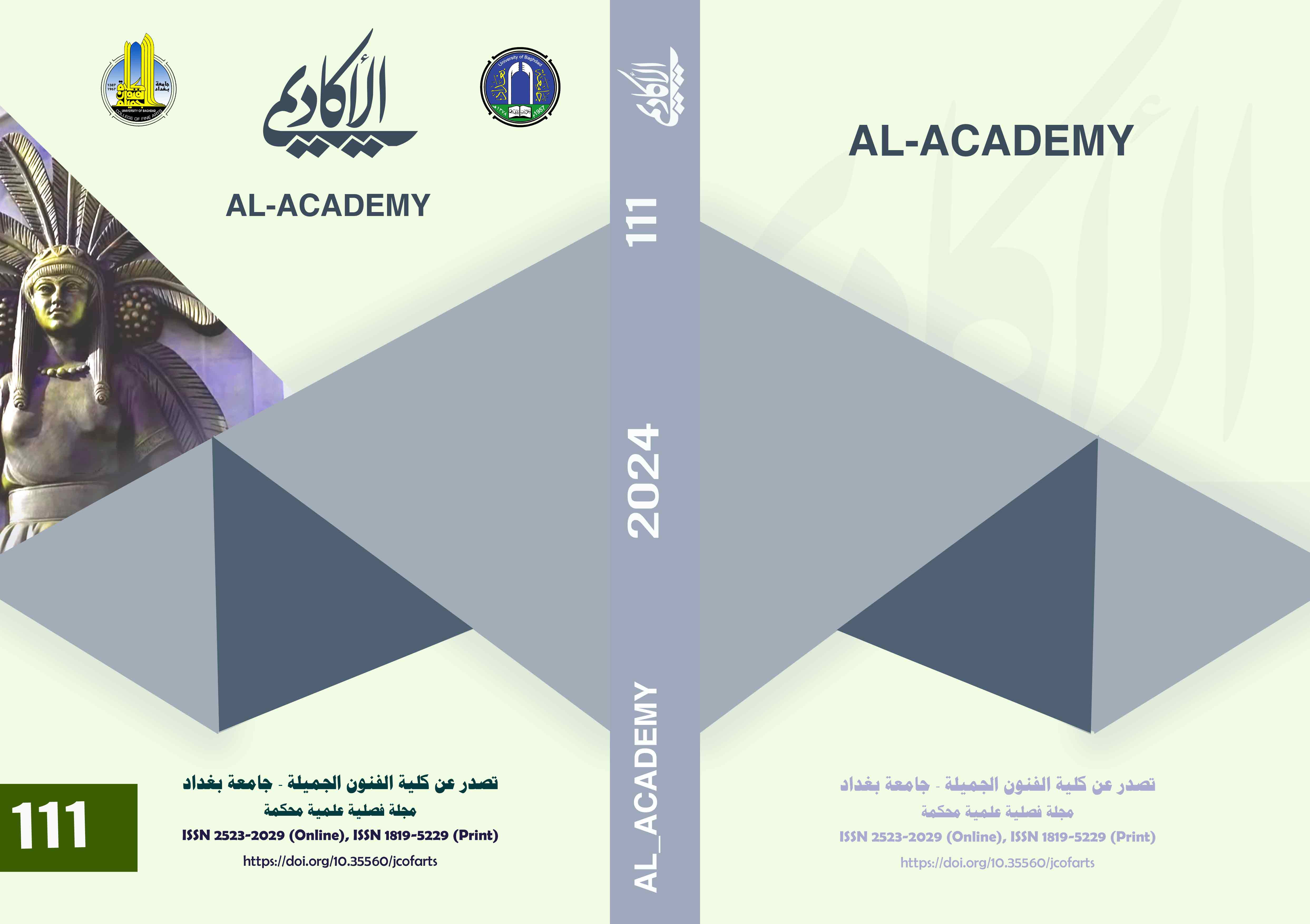The possibility of utilizing the glowing clay technique to enrich contemporary ceramic surfaces
DOI:
https://doi.org/10.35560/jcofarts1298Keywords:
Glowing Clay, Marbling Technique, ChemiluminescenceAbstract
This research discussed glowing-colored clays and how to use them in treating contemporary ceramic surfaces using the marbling technique to create contemporary ceramics characterized by aesthetic and expressive values. Therefore, we find that the property of Chemiluminescence helped create glowing clays with aesthetic and philosophical transformations. The research problem was summarized in the following question: Is it possible to benefit from the glowing clay technique to enrich contemporary ceramic surfaces? The research aims to identify the glowing clay technique in enriching contemporary ceramic surfaces. And revealing color-forming solutions using the glowing clay technique. It follows the descriptive approach in the theoretical framework of glowing colored clay and the marbling technique, and the experimental approach in the applied framework of self-experiment. The research hypothesizes that glowing clay technology could be used to enrich contemporary ceramic surfaces. The most important findings of the research are that the glowing clays are suitable for shaping using the marbling technique for ceramic shaping. The research also recommends the use of other techniques for ceramic modeling with glowing-colored clays. In addition, exploiting everything new and innovative in enriching contemporary ceramic surfaces.
References
Abdullah, M. S. (2015). Learning ceramics...the art and science of a guide for amateurs, scholars and artists. Cairo: Anglo-Egyptian Library.
Al-Bahlil, A.-M. A. (2017). Color and texture effects of ceramic surface treatment. Tripoli: College of Arts and Media Magazine.
Al-Mashali, A. F. (2017). The dialectics of technology and form in land architecture (Vol. 1). Oman: Dar Ghaida for Publishing and Distribution.
Bone, A. (2017). OPTIMIZATION OF STRONTIUM ALUMINATE PHOSPHOR FOR DEVELOPMENT OF A COLLOIDAL NANOPARTICLE INK SOLUTION. Maryville: Maryville College.
Hawsawi, H. A. (2023). Chemical photoluminescence to create glowing local clays and utilize them in contemporary ceramics. Makkah: University of Jeddah.
Marbling Your Ceramics. (2019, 11 26). Retrieved from The Glazy & The Glazy Wiki : https://wiki.glazy.org/t/marbling-ceramics/868.html
Morikawa, T. K. (2005, 01 20). Characteristics of Strontium Aluminate Crystals Used for Long‐Duration Phosphors. Retrieved 10 26, 2020, from https://doi.org/10.1111/j.1151-2916.1998.tb02349.x
Omar Abdel Aziz Abdel Moneim، Ola Hamdi Al-Sayed، و Mustafa Mohamed Jamil. (2018). Modern techniques for treating ceramic surfaces. Journal of Architecture, Arts and Humanities.
R.E. Rojas-Hernandez, M. R.-M. (2014, 11 25). Designing Nanostructured Strontium Aluminates particles for Achieve High Luminescence Properties. Retrieved 10 26, 2020, from Journal of Materials Chemistry C: https://pubs.rsc.org/en/content/articlelanding/2015/tc/c4tc02262a#!divCitation
Rhodes, D. (2000). Clay and Glazes for the Potter. Krause Pubns Inc; Revised, Expanded edition.
Society, A. C. (2020, 10 26). Zinc sulfide. Retrieved from ACS CHEMISTRY FOR LIFE: https://www.acs.org/molecule-of-the-week/archive/z/zinc-sulfide.html
Downloads
Published
Issue
Section
License
Copyright (c) 2024 Huda Hawsawi

This work is licensed under a Creative Commons Attribution 4.0 International License.













